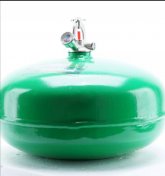ArthurEld
Solar Wizard
Without oil it will gall and that could ruin the threads.
Damned if you're wet, damned if you're dry?
How would anti-seize figure into the equation?
(Something of a rhetorical question, but curious as to what your answer would be.)
It seems to me that pull-out force would remain unaffected by the presence of a lubricant -- so when using studs, I don't see how it would matter because you're not turning the stud to secure anything to the terminal, thus torque values remain unaffected. Am I missing something?
It seems to me that pull-out force would remain unaffected by the presence of a lubricant -- so when using studs, I don't see how it would matter because you're not turning the stud to secure anything to the terminal, thus torque values remain unaffected. Am I missing something?
It matter a great deal!!I don't think it matters much if you're using a stud, bolt or screw. It's still upward force exerted against the terminal threads.
It matter a great deal!!
With a bolt/screw you are applying the force in a twisting motion, a lot more stress on the threads.
With a stud you can more easy be sure you have all 5 or 6 threads that are available in your terminal.
A screw/bolt you need to be quite exact.
And if you need to have double bus-bar..
You already loose a thread.
Sure, and you are correct.I stand by what I said. If a bolt/screw is getting threaded to the 6th thread until force is exerted against the bus bar or cable lug, it should have the same holding force as a stud.
Are there "flat head drill"?
As I don't need to go deeper, just wider.
A few of these to prevent to go too deep:
I have found it very easy to drill into this soft aluminum by hand in the drill press (no motor used).I use a bench grinder to convert a typical drill bit to flat.
Set screws might slip.
If you cut a suitable piece of tubing (e.g. copper) and slip it over drill bit, you can adjust it in chuck to get desired depth. If chuck slips the hole would be more shallow rather than too deep.
Google tells me that to tap M8 you need a 6.75mm drill.(Or 17/64)
I ordered 2, mostly because a replace takes days.
At $2 per drill, Inc delivery, not bad
I found 1/2” aluminum rod which is what I am practicing on now. Not ideal because it is round, but I have a V-shaped tapping guide that holds it flat.If you have some old heatsinks, that is a good way to practice.
Yes, you can easily tap the thread by hand in the press. The challenge I have had is getting the tap back out without destroying the newly-tapped threads in the process.Thanks for the tip of using without motor.
I can take off the belt, and rotate by hand easy.
Perhaps even the thread can be done like this!




